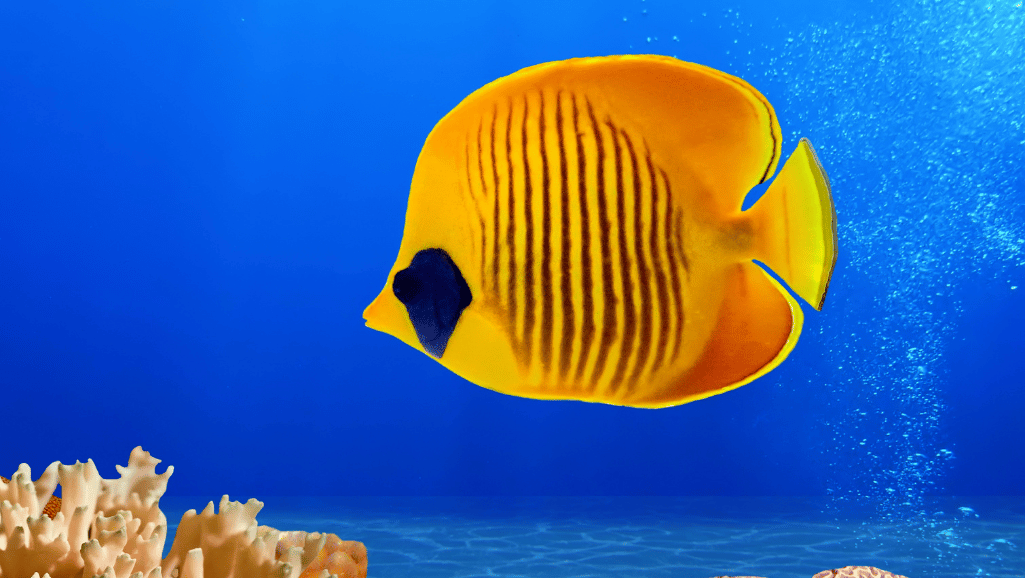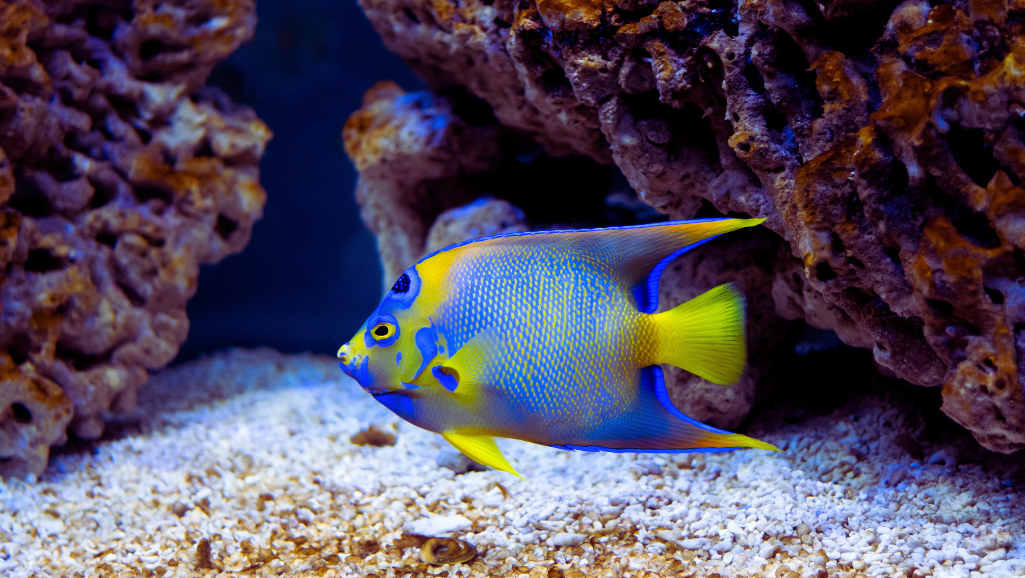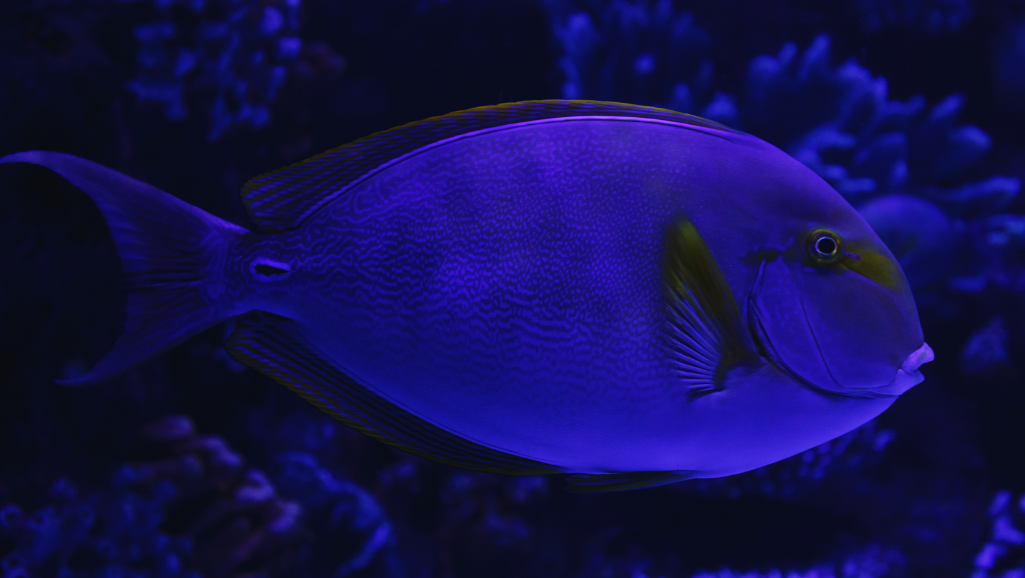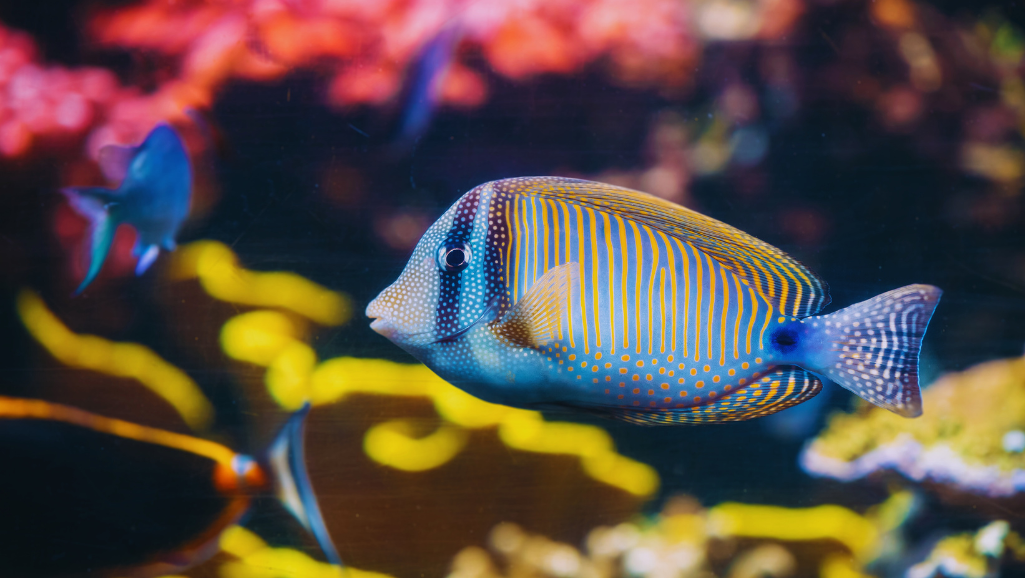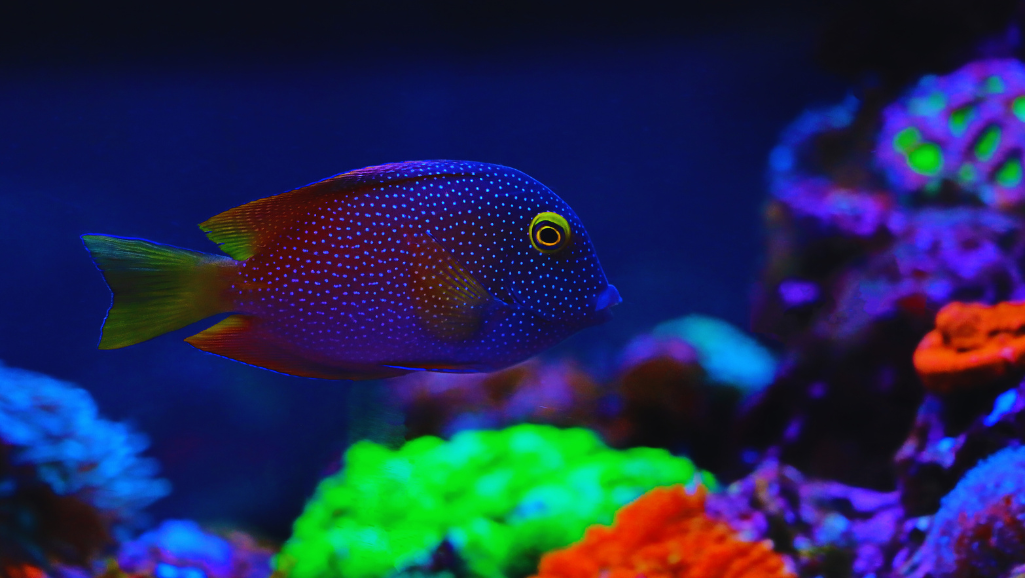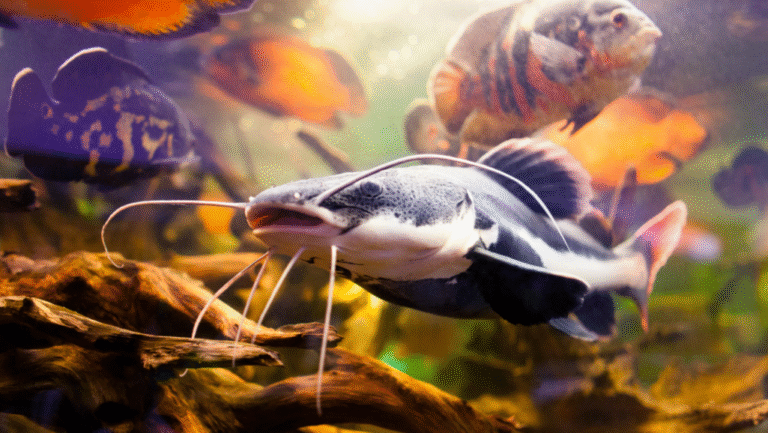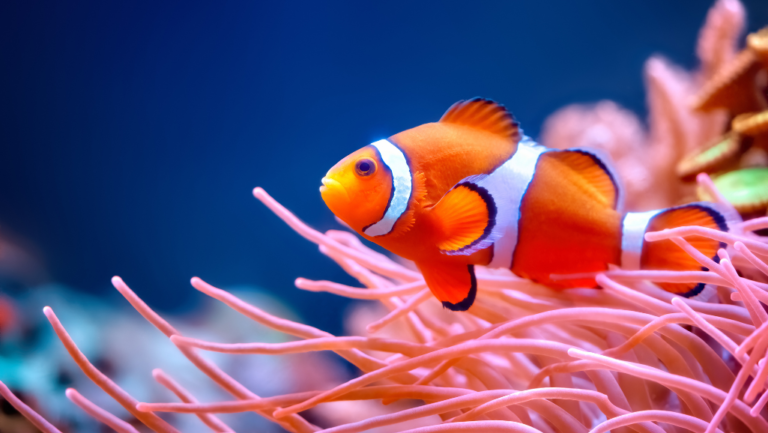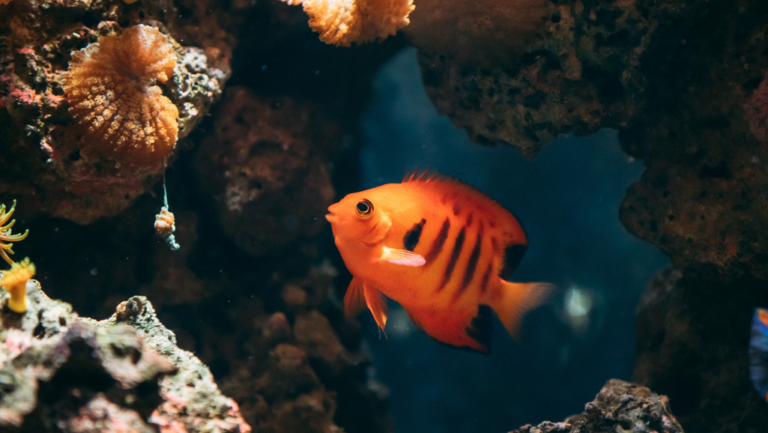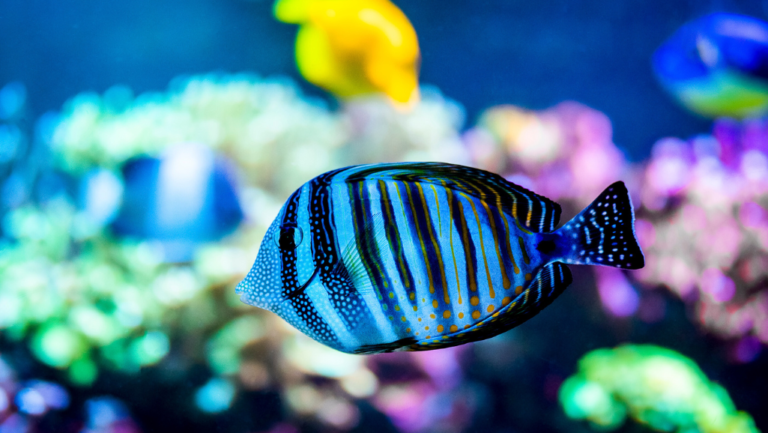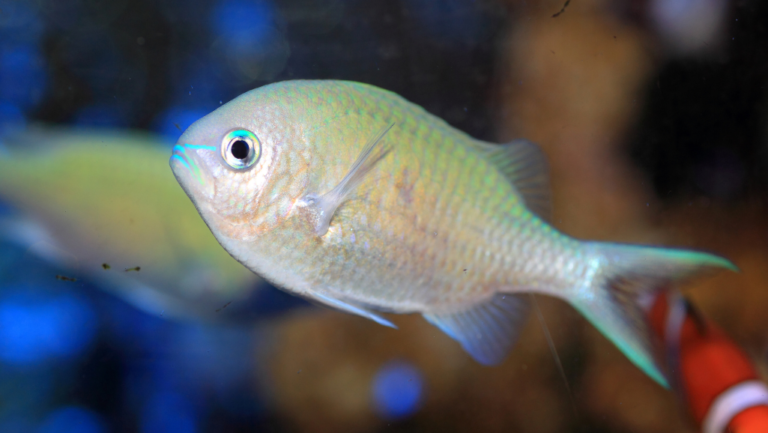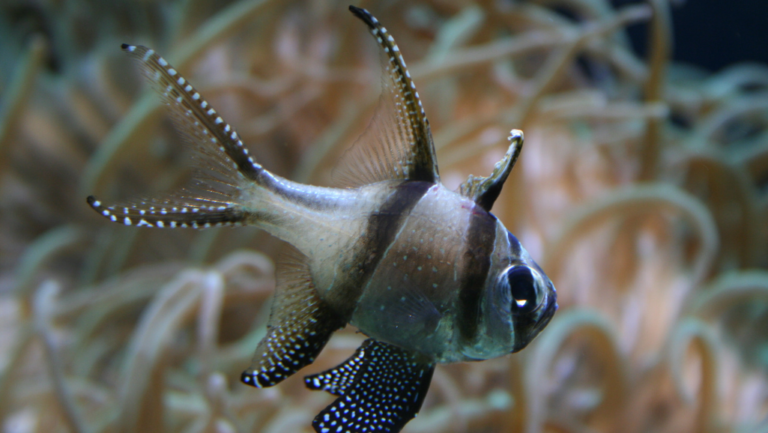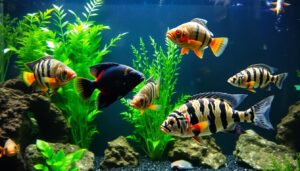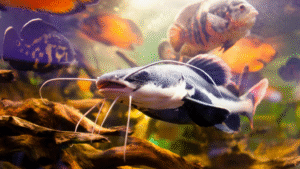Bright, active, and purposeful — the yellow eye beauty commonly called the eye Kole Tang adds both color and utility to reef displays. Its laterally compressed, oval body and the gold ring around the eye create striking contrast against live rock and corals.
As a dedicated grazer, this fish favors film algae and detritus and benefits from supplemental marine seaweed clips several times per week. Adults do best in a roomy aquarium of 70+ gallons (≈265+ L) with steady flow and plenty of swim space.
Buy from a reputable diver den or trusted reef seller and choose the right size for your system. With proper aquarium supplies and stocking order, the yellow eye kole polishes glass and rock while remaining generally reef-safe with invertebrates.
Quick info: Yellow Eye Kole Tang — see product page for size availability and care information. Shop stock / view size guide.
Key Takeaways
- Active grazer: the yellow eye kole excels at consuming film algae and detritus, helping keep rock and glass cleaner.
- Distinctive features: a laterally compressed, oval body with a gold ringed eye gives strong visual contrast in reef tanks.
- Tank needs: adults do best in 70+ gallons with steady flow and open swim space.
- Feeding: offer an algae-first diet and use marine seaweed clips several times weekly to encourage natural grazing.
- Compatibility: generally reef-safe with invertebrates but can be semi-assertive toward other tangs.
- Purchasing tip: buy from a reputable diver den or trusted reef seller and choose the right size for your display.
Meet the Yellow Eye Marvel: Features and Benefits for a Thriving Reef Aquarium
The yellow eye kole combines elegant form with a focused appetite for algae, making it a practical and attractive addition to many reef systems.
Spotlight on Species: Ctenochaetus strigosus (kole tang)
Ctenochaetus strigosus is the classic spotted bristletooth tang. Described historically from Hawaiian specimens, the species is commonly associated with Hawaiian waters though collection localities can vary across the central Pacific.
Distinctive Look: Oval Body, Gold Ringed Eye, Stripes and Spots
Juveniles often display brighter yellow-gold stripes and spots that soften into a darker, purplish-brown sheen with fine blue lines as they mature.
The conspicuous yellow ring around the eye and the fish’s streamlined, oval profile make the species instantly recognizable — a favorite for hobbyists who want both utility and visual appeal.
Why Reefers Love It: Natural Algae Grazer That Polishes Rock and Glass
The yellow eye kole uses a small mouth lined with bristle-like teeth to sift diatoms, film algae, and detritus from rock and glass with fine precision. This targeted grazing behavior makes the fish a practical choice for reef keepers who want a tidy display without relying solely on manual cleaning.
Benefit: consistent grazing reduces film and turf algae buildup, improving water clarity and allowing corals and encrusting life to stand out visually.
Quick Stats at a Glance
- Size: typically 6–8 inches (15–20 cm) adult length — note some sources list averages near 6 inches; local populations can vary.
- Temperament: active grazer; semi-assertive toward similar-shaped tangs.
- Practical stocking note: for most hobbyists the yellow eye performs best as the sole tang in a 70+ gallon (≈265 L) aquarium; if you plan multiple tangs, consider much larger systems (180–240+ gallons) and careful introduction.
- Ideal water parameters: stable, oxygen-rich flow with mature biological filtration — see FAQ for specific temperature, salinity, and pH ranges.
Kole Tang: Care, Feeding, and Compatibility Essentials
Set your system up right and this yellow eye grazer will reward you with reliable algae control and steady color. Prepare a mature 70+ gallon tank (≈265 L) with brisk, oxygen-rich flow and long swim paths to suit the fish’s energetic laps.
Tank readiness
Arrange rockwork to create open channels and patrol routes so the kole tang can graze glass and live rock. Maintain stable water parameters (see FAQ for specific values), good oxygenation, and mature biological filtration to support activity and coloration.
Feeding routine
Prioritize an algae-first menu. Offer clipped marine seaweed sheets (nori-style) secured with a clip as an ongoing grazing option — aim for at least 3 times per week and consider leaving a clipped sheet overnight periodically to encourage natural feeding. Supplement daily with vegetable-rich pellets or flakes formulated for herbivores.
Rotate trusted brands or comparable products rather than relying on any single brand. Use frozen foods sparingly (once or twice weekly) as protein supplements to maintain balanced nutrition without upsetting the gut flora.
Stocking wisdom
The yellow eye kole tang (ctenochaetus strigosus) can be semi-assertive with similar-bodied tangs, so many hobbyists keep it as the sole tang in a display. It is generally peaceful with reef invertebrates and most non-territorial fish, making it a useful clean-up crew member.
- Care level: Moderate — requires steady conditions, routine feeding, and quality water.
- Size and body: Monitor growth and adjust space and diet as it matures; juveniles may need extra algae options.
- Compatibility: good with gobies, blennies, and many wrasses; avoid housing with highly territorial tangs or other bristletooth species unless the system is very large and introductions are staged.
- Quarantine & acclimation: always quarantine new arrivals and use drip acclimation; see FAQ for a 60–90 minute drip protocol.
Order with Confidence: Availability, Shipping, and What to Expect
Plan your purchase around clear weekly shipping windows to reduce stress and simplify acclimation. Typical size availability runs from about 1″ to 6.5″ — pick the specimen size that fits your tank and long-term plans.
Free Shipping Qualifying and Weekly Shipping Windows
Check live inventory and availability notes so you can schedule delivery on a convenient week. Look for free shipping qualifying promotions when buying both livestock and aquarium products to save on overall price.
Retailers generally pack live fish in insulated containers with oxygen and temperature control. Expect predictable weekly shipping windows; track your order, be available the delivery week, and prepare aeration and drip-acclimation gear in advance for the best live-arrival results.
Please Note: Specimen May Vary from the Image Provided
Appearance can vary by maturity and collection locality. Juveniles often show brighter yellow-gold stripes and spots, while adults deepen in tone — the live specimen you receive may not look identical to the product image.
For precise information about available size classes, current price, or compatibility questions, use the product page “click information” links or email support. Watch diver den releases and curated drops for standout specimens.
- Pack smart: add nets, nori/seaweed, clips, and an acclimation kit to your order so you arrive prepared.
- Shipping tips: read qualifying details, choose a week you’ll be home, and have quarantine equipment ready.
- Buyer help: contact support for live-stock availability, shipping windows, and product information.
Conclusion
Selecting the right specimen and prepping the tank sets the stage for a yellow eye kole that rewards steady husbandry. A well-chosen kole tang (ctenochaetus strigosus) becomes a living focal point, often showing subtle stripes as it matures into its oval body; note that size and coloration can vary by locality.
Keep care simple and consistent: maintain stable, ideal water parameters (see FAQ for specifics), provide brisk flow in a 70+ gallon aquarium (≈265 L) for most setups, offer frequent marine seaweed clips, and feed sensible prepared foods with frozen items only as occasional supplements. This routine supports steady grazing on algae and confident daily patrols across rock and glass.
Use the quick stats and FAQ to match specimen size, tank space, and compatibility before purchase. When you plan ahead, the yellow eye kole (eye kole) will elevate your reef tank — clearer viewing, lively color, and steady enjoyment week after week.
